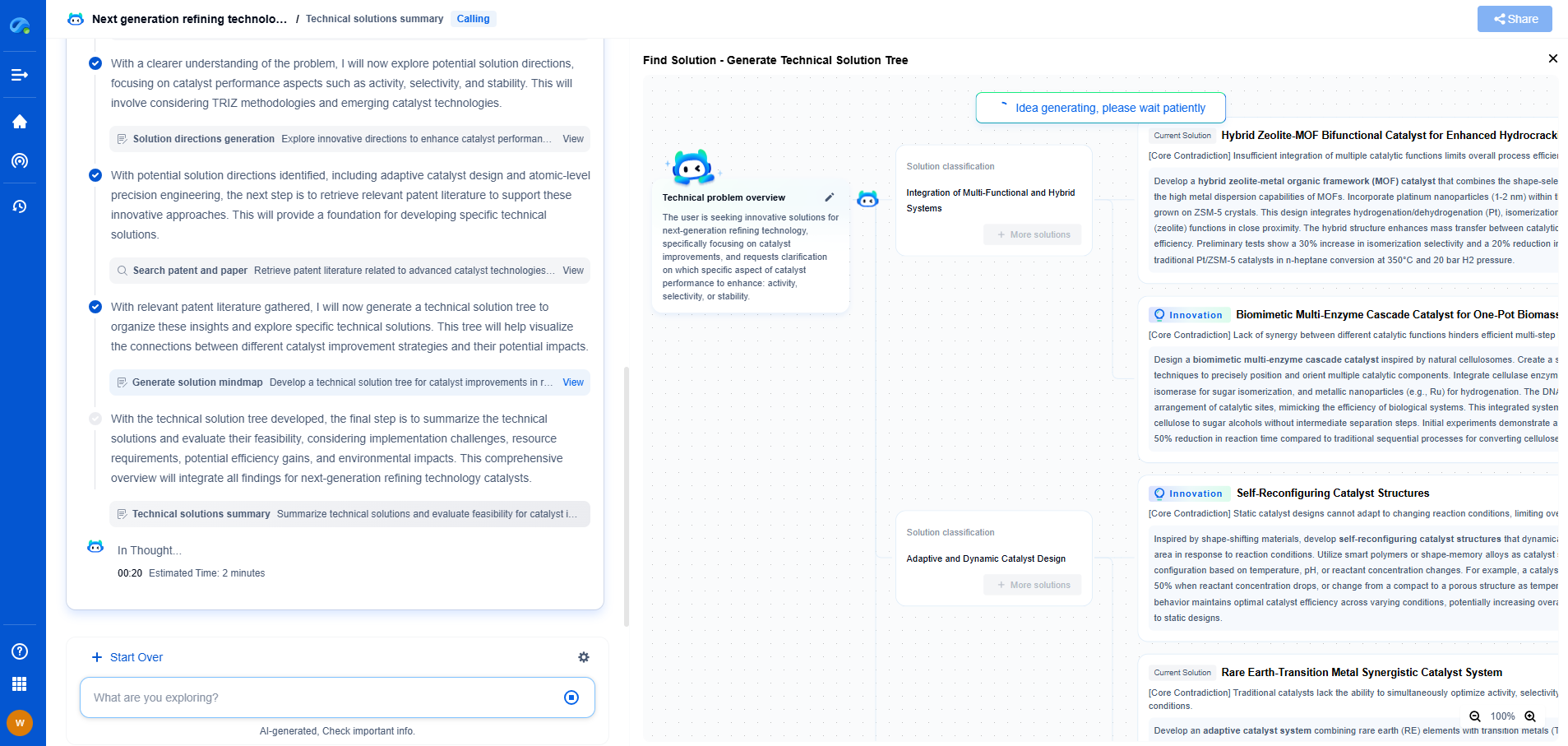What is a Flywheel Storage System? High-Speed Energy Backup Explained
JUN 26, 2025 |
As renewable energy sources become more prevalent, the need for efficient and reliable energy storage systems has never been greater. One solution that has been gaining attention is the flywheel storage system. But what exactly is a flywheel storage system, and how does it work as a high-speed energy backup? This article delves into the intricacies of flywheel technology, its advantages, and its applications.
Understanding the Basics of Flywheel Technology
At its core, a flywheel storage system is a mechanical device designed to store rotational energy. The fundamental component of this system is the flywheel itself, a heavy rotating disc that spins at high speeds. Energy is stored in the form of kinetic energy, and this energy can be quickly converted back to electricity when needed.
The Mechanics Behind Energy Storage
The operation of a flywheel system involves several critical steps. Initially, electrical energy is used to spin the flywheel to high speeds. This energy is stored as rotational energy in the flywheel. When electricity is required, the flywheel's rotational energy is converted back into electrical energy through a generator. This conversion process can occur almost instantaneously, making flywheel systems exceptionally responsive.
Advantages of Flywheel Storage Systems
Flywheel storage systems offer several compelling benefits that make them an attractive option for energy storage:
1. **High Efficiency**: Flywheels can achieve round-trip efficiencies of up to 90%, minimizing energy loss during the storage and retrieval process.
2. **Rapid Response**: The system's ability to deliver power in milliseconds makes it ideal for applications requiring fast response times, such as grid stabilization and uninterruptible power supplies.
3. **Longevity and Durability**: With minimal maintenance requirements and a long operational life, flywheels are a reliable long-term investment.
4. **Environmental Friendliness**: Unlike chemical batteries, flywheels do not rely on toxic materials, making them a more sustainable option.
Applications of Flywheel Storage Systems
Flywheel technology has found its niche in several key applications:
1. **Grid Stabilization**: As power grids incorporate more variable renewable energy sources, maintaining a stable frequency becomes challenging. Flywheels can provide the necessary frequency regulation to stabilize the grid.
2. **Uninterruptible Power Supplies (UPS)**: In critical facilities like hospitals and data centers, flywheel systems ensure an uninterrupted power supply during outages, providing a seamless transition between power sources.
3. **Transportation**: Some public transport systems use flywheel technology to store braking energy, which is then used to accelerate the vehicle, improving energy efficiency.
Challenges and Future Prospects
Despite their advantages, flywheel systems are not without challenges. The initial cost of installation can be high, and the need for advanced materials and engineering can add complexity. However, ongoing advancements in materials science and engineering continue to improve the cost-effectiveness and efficiency of flywheel systems.
Looking ahead, the future of flywheel storage systems appears promising. As the demand for fast-acting, efficient, and sustainable energy storage solutions grows, flywheel technology is well-positioned to play a vital role in the global energy landscape.
Conclusion
Flywheel storage systems represent a high-speed, efficient, and environmentally friendly energy storage solution. Their unique characteristics make them well-suited for a range of applications, from grid stabilization to uninterruptible power supplies. As technology advances and the need for reliable energy storage solutions increases, flywheel systems are poised to become an integral part of our energy infrastructure.
Stay Ahead in Power Systems Innovation
From intelligent microgrids and energy storage integration to dynamic load balancing and DC-DC converter optimization, the power supply systems domain is rapidly evolving to meet the demands of electrification, decarbonization, and energy resilience.
In such a high-stakes environment, how can your R&D and patent strategy keep up?
Patsnap Eureka, our intelligent AI assistant built for R&D professionals in high-tech sectors, empowers you with real-time expert-level analysis, technology roadmap exploration, and strategic mapping of core patents—all within a seamless, user-friendly interface.
👉 Experience how Patsnap Eureka can supercharge your workflow in power systems R&D and IP analysis. Request a live demo or start your trial today.
- R&D
- Intellectual Property
- Life Sciences
- Materials
- Tech Scout
- Unparalleled Data Quality
- Higher Quality Content
- 60% Fewer Hallucinations
Browse by: Latest US Patents, China's latest patents, Technical Efficacy Thesaurus, Application Domain, Technology Topic, Popular Technical Reports.
© 2025 PatSnap. All rights reserved.Legal|Privacy policy|Modern Slavery Act Transparency Statement|Sitemap|About US| Contact US: help@patsnap.com

